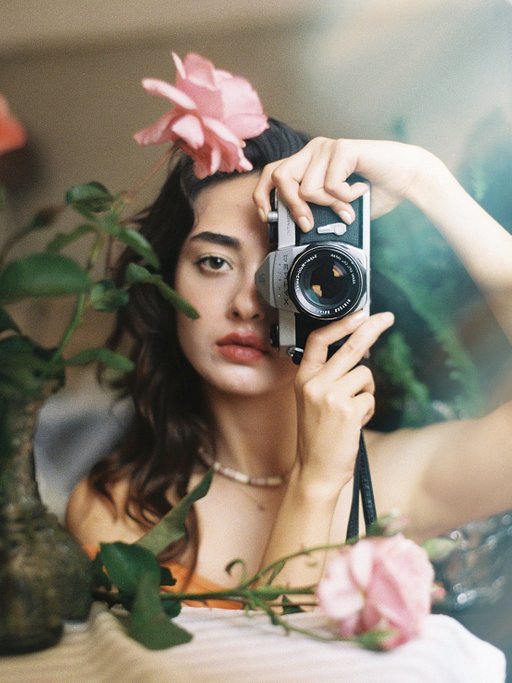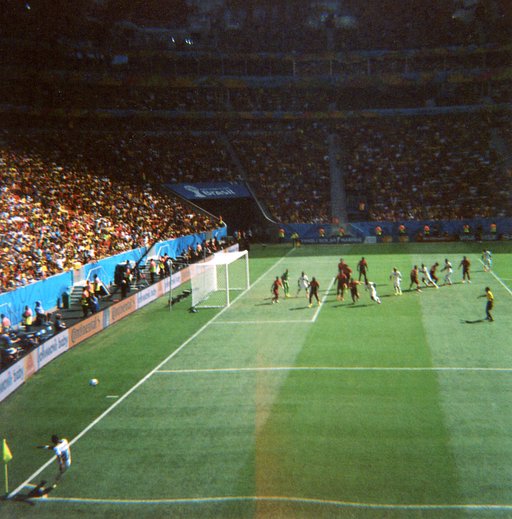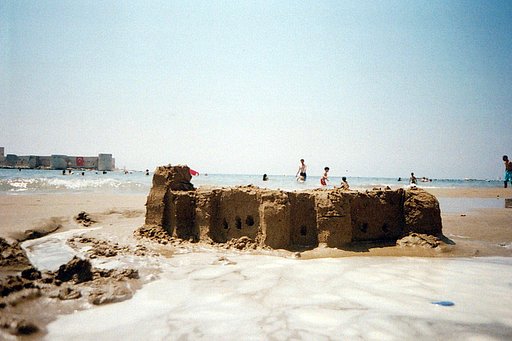Let Me Tell You How I Konstrukted My Konstruktor!
1 12 Share TweetThe first thing I loved when I reached to see the Konstruktor camera was its very photographic look. Being able to discover how the camera works while you build it, and focusing with its glass screen in the viewfinder, has been two of my most genuinely photographic experiences ever!
I love the shape of the Konstruktor. Merging the typical SLR body and the TLR viewfinder, the guys at Lomography got a very sexy camera. And its price is as inviting as its curves.

I got my Konstruktor at the launch party we celebrated in the Lomography Gallery Store Madrid Echegaray, and that very same weekend I started building it. In the Lomography Magazine you can already find a lot of amazing reviews on how to konstrukt it and squeeze all of its photographic features. In this review, I’ll let you know what my experience building the camera was like, remarking onthe most useful tips I read out there and trying to contribute my two cents with a few new advices.
Getting the foundations ready
Before I got to work, I watched the video of the building process and checked a couple of times the diagrams on the instructions to get acquainted with the camera parts and the steps of the process. OK, so now you’re ready? Are you thinking about how much fun you’re about to enjoy? Then let’s go on!
I prepared some stuff beforehand:
- A nice table, with room enough to work comfortably, spread the parts, the tools, and even the laptop where I was planning to follow the instruction video. Almost all of the parts of the camera are black, so a clear working surface will be useful not to lose them.
- I used an old magazine to cut the pieces without damaging the table.
- Other than the included screwdriver (I personally decided to use one of my own), you’ll need a cutter for the plastic parts. Also, in a couple of steps, a pair of pincers will be helpful but now essential.
- I went through the process with a hand from @capsaicina_liposoluble; he not only helped me to document the process, but also made the experience much funnier. (Thanx!)
Once the ground was prepared, I opened the box and checked whether any part was missing using the instructions book. Your box should contain:
- Two injected plastic frames with most of the camera pieces
- The front, the body and the back of the camera
- Light chamber with pre-mounted reflex system
- Small square cardboard box with parts of the camera lens
- Rectangular cardboard box with screws, springs, tripod mount and precut pieces
- Instructions, screwdriver and decorative adhesives
Although they are detailed in a diagram, a missed an easy tip to distinguish the four different kinds of screws. For your convenience, let me tell you how many I got of each one:
- S1 x 5
- S2 x 8
- S3 x 12
- S4 x 3
After checking all of the parts, I started the process following the written instructions and the video simultaneously.
The lens
For this firs step, I decided to follow the sequence in the video (which is not the same as in the written instructions), as it looked easier to me. So, first I put B17 and B18 together, then added B16, screwed everything together and finally mounted A8 in place.
A8 is the lens itself, and you will have to cut it from one of the plastic frames. For that purpose, I used the cutter and tried to cut as close to the piece as I was able to, without damaging it. Later, if needed, burrs can be removed by using the same cutter or some sand paper.

Perhaps at the beginning A8 seems not to fit properly into B17, put with a light pressure it will get into place. After putting the four screws in place, the union will be perfect. We will set the lens apart until we build the body of the camera.
The hood viewfinder
It’s quite straightforward: just clip the three walls and the cover in the correct order (they are numbered), then the magnifying glass. The numbers on these parts will also help to properly open up and close down the hood viewfinder when using the camera.
The winding mechanism and the counter
Now we can start with the elements of the camera body, working on its main part: B21. The first step will be putting P8 in place, which is the little arm that will block the advance mechanism every time we wind a full frame. That piece needs a spring (B9) that should be carefully installed.

That spring has a straight side and a U-shaped side. The straight side must point down and towards what will be the camera front, fitting into the small groove intended for this in B21. Follow the diagram carefully. The U-shaped side, on the contrary, must point up and towards what will become the camera back.
The U-shaped end of the spring must be attached to the tiny hook on P8, not to any of the two arms of the piece. When everything is in place, we can screw P8 and check if it can freely move.
We’ll go on with the gear P4, which will turn when we advance the film to count the number of winded sprockets. We will attach it into its place, and keep it there temporally while we attach B22. Insert B22 almost all its way down, then turn P4 until the slot on it becomes aligned with the flat part on the end of B22. Then, and only then, we can push B22 to fit into the slot in P4.
Then, attach B4, the spool where the film will be winded after taking every picture. It has to fit the hole in the bottom of the camera body, so we’ll align them, and push one of the walls of B4 to make it narrower, allowing to fit in place.
Mounting the other gears is quite easy by following the diagram, screwing the pieces together, and checking that they can move smoothly.

Then, turn B4 slowly in the same direction as if you were winding the film on it (counter-clockwise from the camera top), and you will find how P8 slowly moves until it locks P1. At this point, we should put P2 in place, keeping in mind that the raised circular sectors must go in the up-left and down-right positions, as shown in the instructions. We keep the mechanism in that position.

To end up with the mechanism we will attach the winding knob, consisting of a stem that fits into the film canisters (B7), the knob itself (A10) and a screw to keep them together.
The light chamber
We should start by removing the blue protective sheet covering the mirror (pincers might be useful). Be careful not to touch the mirror’s surface with your fingers! It must remain as clean as possible!

Then we will fit the focusing glass on top of the chamber, with the frosted side down. There is a small beak that will guide us to do it in the right direction. Later, the viewfinder’s frame will secure the glass in place.
The shutter
This is probably the part I was most scared about. But don’t worry, actually this is super-easy! Take the camera front (B21) and lay it down on the lens hole, as seen on the video. Just on the right side of the lens hole, you should be able to locate a small perforation to place the piece B24. Keep it there temporally.
Then, look for the spring B10 and hook it up from the stem right next to it. Attach P12 in place as shown in the instructions manual and taking care not to move B24 too much. Next, hook the other side of the spring on P12 (a pair of pincers or a pin might help). Finally, screw P12 and make sure if it can move freely up and down.
To finish that part, plug B26 in place and screw it on B24 from the outside. That handle will allow you to choose whether the light chamber will expose the film for 1/80 s or as long as you keep the shutter pressed. The screw should be hidden by placing the small B25 on it, but I preferred waiting till the last moment to do it, just in case I had to adjust or remove the screw…

The whole body
Now we can put together all of the big parts of the camera: attach the closing hinge to the front of the camera, put the light chamber in place, and place the back cover before adding the rear part of the body, being careful not to get any of the gears moved. Also, add the tripod mount in this step.
Put the base of the viewfinder A11 on top of the body and screw it. By doing so, the frosted glass will be definitely secured in place.
The counter
To mount the counter, we should have kept the gears unmoved along the lats step of the process. Insert A4, then place the numbered disc on it with the “21” number towards the camera front. Then attach the spring that will keep the disc under pressure, add the advance knob A1 and screw everything.
Honestly, I was unable to find the reason why the disc should be mounted on that particular position because, actually, it can be moved at any time (in fact, it is conceived so you can manually adjust it to position “36” anytime you load a new roll into the camera). From my particular experience, that’s the only drawback of this camera: it’s quite easy getting the counter disc unintentionally moved.
Finishing the assembly
Slip the hood viewfinder into the viewfinder base, place the shutter button in place by pressure and screw the reflex system reset handle (A5) on the side of the light chamber.
To correctly mount the lens, one of the screws on its side must be aligned to the mark on the camera body, on the bottom left of the hole where the lens will be attached. As there are two screws on the side of the lens, which one should we align with the mark? That’s quite easy! Choose the one such that after turning the lens counter-clockwise, the focusing scale will stay on the top part of the lens. Once aligned like this, we’ll press the lens against the camera body, and turn it counter-clockwise until a click sounds.
If you followed my advice and you didn’t mounted it before, now is the time to plug B25 in place.

At this point, I held my breath, armed the reflex system, and shot. I almost started jumping around when I saw how that handful of parts I had just put together was able to shoot. I checked the B mode too. Yeah, it damn worked!! An absolutely exciting moment.
Doing some beauty
Now is the time for customizing your Konstruktor. I went for a traditional livery, with red leathers. I rubbed the walls of the camera with some alcohol to remove the grease from all the handling before sticking the adhesives.
Conclusions
I loved building the Konstruktor. In not much more than 45 minutes, I had built up with my own hands a working camera and spent a stunning time with a friend learning how a camera works from the inside. There were a few doubts (which hopefully I have now solved in this review) but the process was stunningly simple and well conceived.
I just can tell you: get your Konstruktor and go konstrukt it. You’ll have a great time and at the end will get a very photographic camera for a very affordable price.
And, of course, you should definitely take a video of you while building the camera, blog about it (via your LomoHome blog), and share it on the ongoing Konstruktor Construction Rumble. The 3 best articles each get 10 Piggies!
The Konstruktor is the world’s first Do-It-Yourself 35mm SLR camera. With it, you can easily build your very own camera from scratch. It’s the perfect tool for having fun whilst learning the exciting mechanics behind how analogue photography works. Get yours from the Online Shop or Lomography Gallery Stores Worldwide. Find out more about the camera on the Konstruktor Site.
vgzalez tarafından, 2013-07-10 tarihinde ve #donanım #review #konstruktor-review-diy-building-assembly-slr-35mm-vgzalez-tutorial başlığında yazıldı.

































Bir Yorum